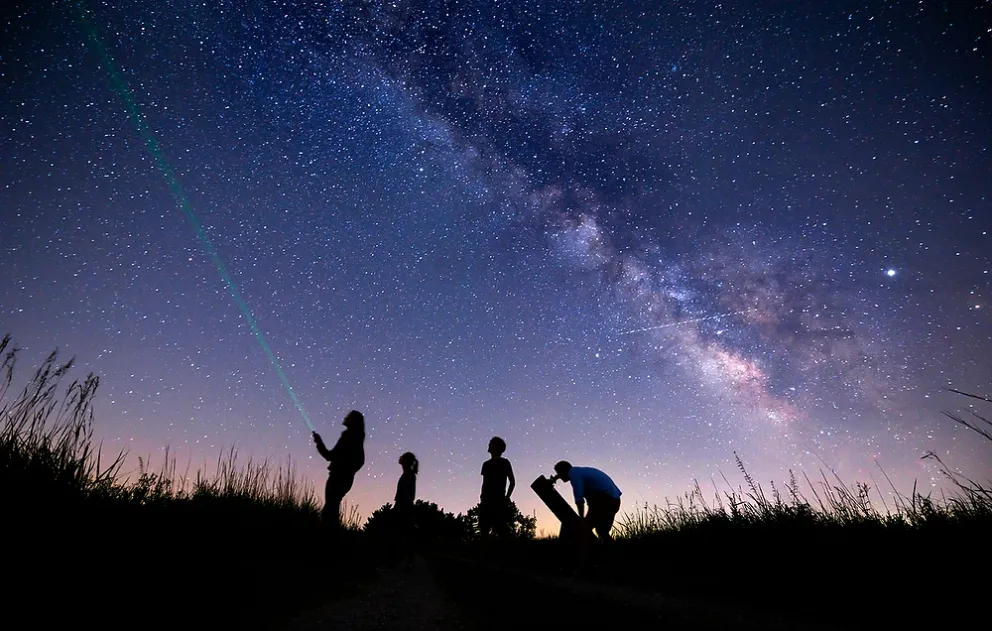
(text and photos by Justin Hayworth) Justin Hayworth is the photographer at Grinnell College in Grinnell, Iowa. His photo in the General Features category, "Deep Space," was voted Best in Show in the September 2019 Monthly Image Competition.
Quick tech stuff—camera model, focal length, exposure data, lighting used (if any):
Canon 5d Mark IV; Tamron 15-30mm f2.8 @15mm
Exposure: 30 seconds @f2.8, ISO 3200
Briefly go through the process of how the photo came about: Assignment or found/self-assigned?
I’ve wanted to do more night sky photos since the 2017 Symposium in Idaho where I heard Mark Kettenhofen speak and show his night sky work.
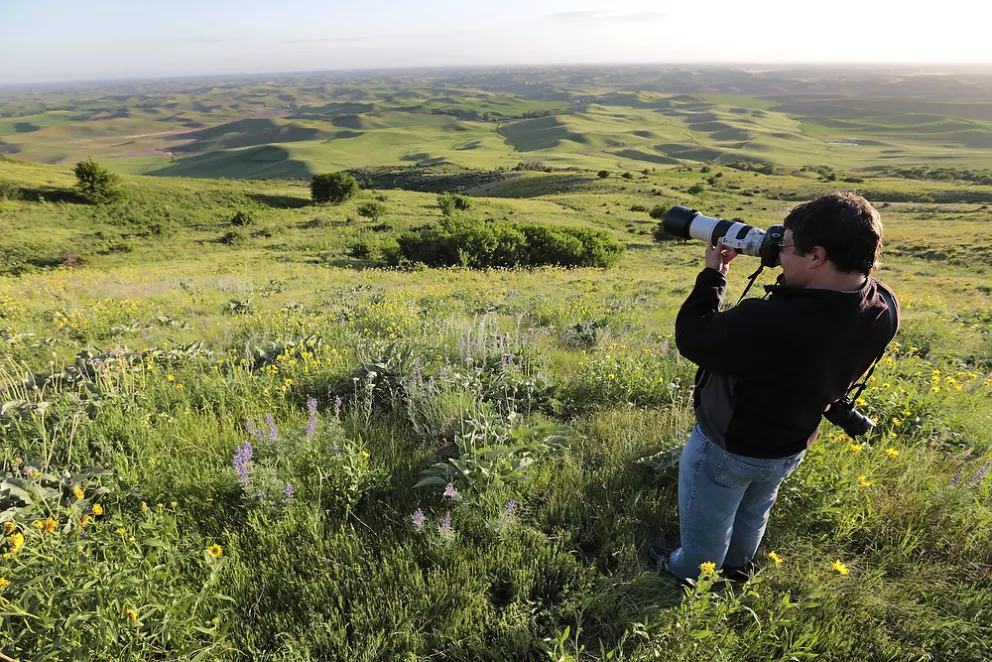
(photo by Chris Gannon) Justin Hayworth loose on the Palouse at the 2017 Symposium.
This was a little bit assignment and a little bit self-assigned. An agency the college was working with had suggested a stock photo to go with a small write up about one of our physics professors and her research on deep space. I could have left it alone and let them run the stock photo but I knew I could make an image with the professor that would be better.
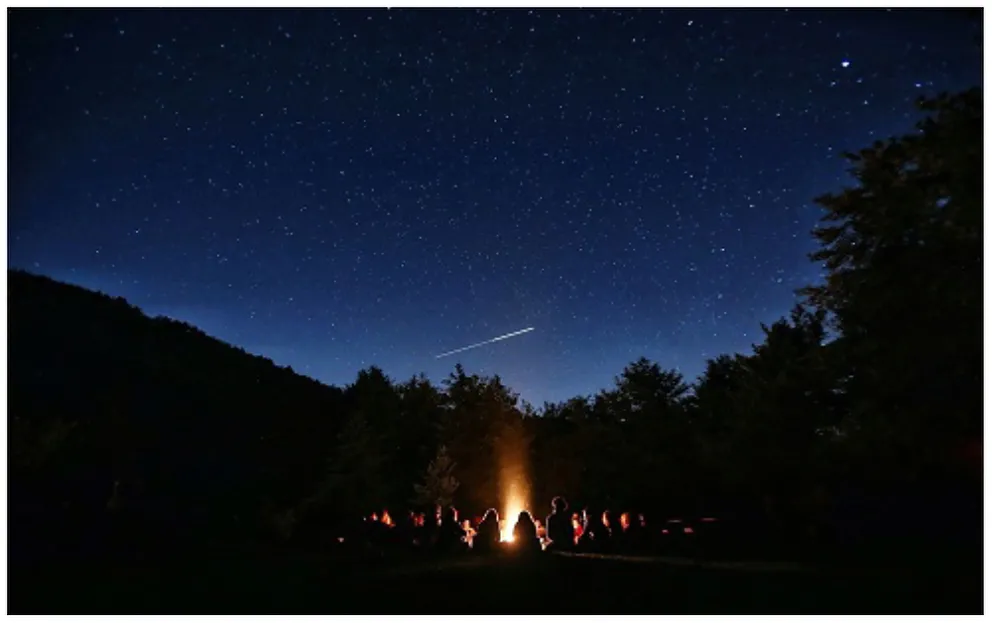
(provided) The stock photo originally planned to illustrate the article.
I’d already scheduled a shoot with the professor anyway. That’s a self-assigned thing I do every summer. I reach out to professors who are doing summer research with students and I try to photograph as many of those as I can work in. I do this for several reasons -- most of them having very little to do with actually making a particular image or fulfilling a particular need in our photo library. I could talk about my overall approach for navigating the complexities of campus politics at length but that’s not what you here for, so back to the night sky image.
Any unique logistics in making the photo? What sort of post processing (or not)?
Research
Prior to this shoot I’ve tried to photograph the Milky Way a grand total of three times. The first attempt was easy: I got a good shot and everyone loved it. It was luck. The second time…it didn’t go so well. I got nothing. I didn’t even really get many stars that night. The third time was at the Symposium in Idaho, and I was successful again. Again it was luck.
It’s really important to recognize and know what you don’t know. I like to think that I can shoot just about anything and make okay photos. The areas where I consistently make better photos are areas that I know more about. I know next to nothing about astronomy. The two times I made good photos of the Milky Way I was lucky. I needed to learn what I didn’t know about getting that photo. So I started researching. I looked back at the notes I took during the 2017 Symposium (Note to self: Take better notes…) I scoured YouTube and Google and found some good videos and tutorials. Armed with that new information I showed up to my shoot with the professor and students and pitched the idea of the photos I wanted to make to them.
Things I learned about photographing the Milky Way in North America: In April and May the pre-dawn hours work best and you will need to be looking south. From June to early August it’s closer to midnight, though it will be visible most of the night. From Mid August through September it’s pretty much as soon as the sky gets dark. You want to pay attention to the moon phases and go when you have as little moon as possible, and you want to find out when astronomical darkness begins. Oh yeah - you also need to find a place with as little light pollution as possible. This site can be helpful.
Location
The first place I was successful in getting a Milky Way photo was at the college’s prairie research site, so I knew I could get there again and I could have full run of the place and not worry about other people becoming a problem. You will notice the glow near the horizon-that’s not the sunset, that’s light pollution.
For my shoot I determined I had a four-day window from July 29th – August 2nd and that astronomical darkness began around 10:30 p.m.
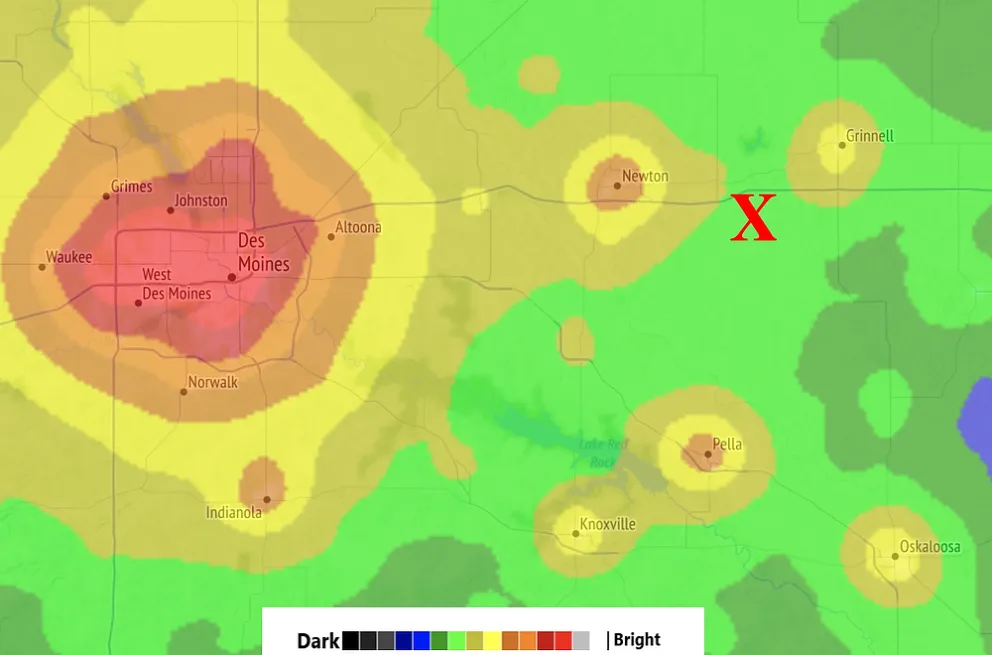
X marks the spot.
Logistics
How do you get people to stand still for 30 seconds? I guess that is where I got lucky again. I asked the professor and students to be as still as possible and they pretty much nailed it. If you look closely you can see a little ghosting.
Props
They were critical to tell the story. I needed a telescope to give the science angle to the photo, even though the professor’s research doesn’t have anything to do with a telescope. It sets up the ‘researching the stars and deep space’ narrative. The green laser was an extra. The thing I always ask myself when I’m shooting or setting up a photo is what is the next thing I can do to make this better or make it look different than what I have seen. In my research I didn’t find many photos with the Milky Way that had a laser and I thought it could add to the teaching aspect of the image. It is the professor using the laser to point out stars to the students. I had no idea if it would show up in the photo but my research said they were bright so it was worth a shot.
Post-processing
I didn’t do a ton of post processing on the image. In Adobe Camera Raw I added some contrast, bumped my whites, added some vibrance and saturation. Then I used the brush tool painted over the milky way and added some clarity, then I did a little noise reduction on the whole image. I then opened the image in photoshop and removed the plot markers.
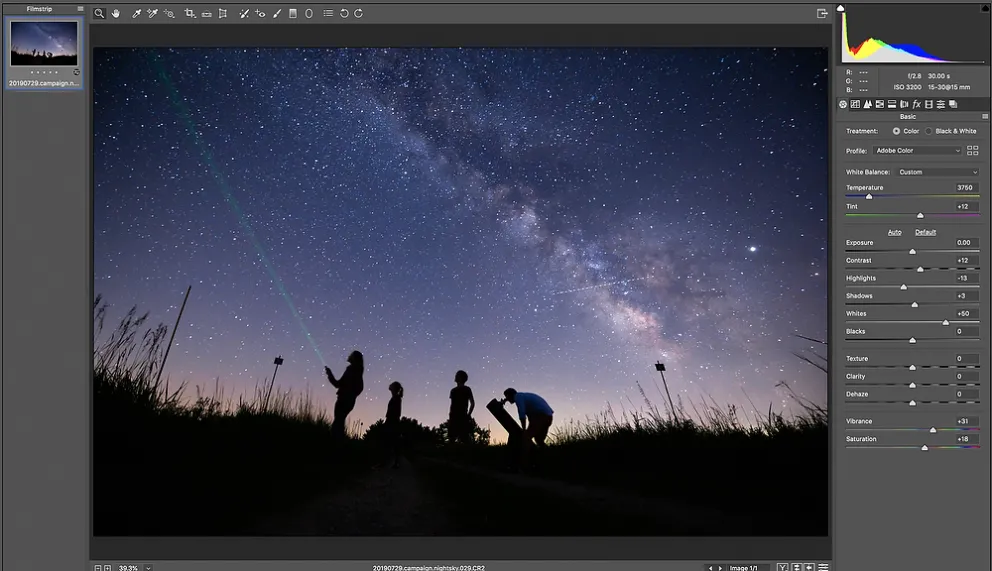
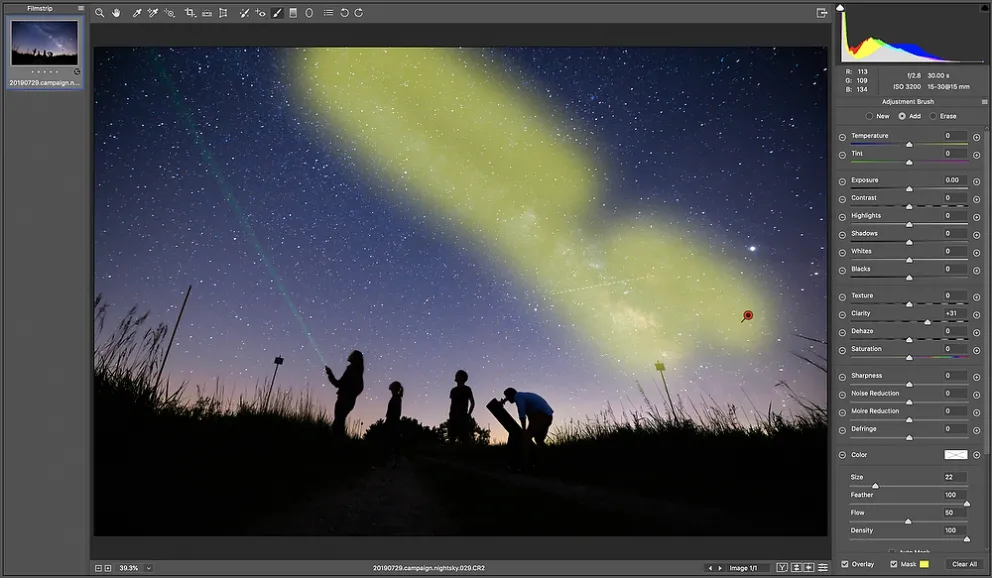
What (if anything) would you do differently if you could re-shoot this today?
I would have shot more. I can get so locked in on shooting for a particular goal or layout that I don’t try different things. I was really trying to be mindful of the professor’s and the students’ time as I already had them out in a field for a couple of hours when they all had to work the next morning. So as you will see on the contact sheet it was really 16 frames then I was done.
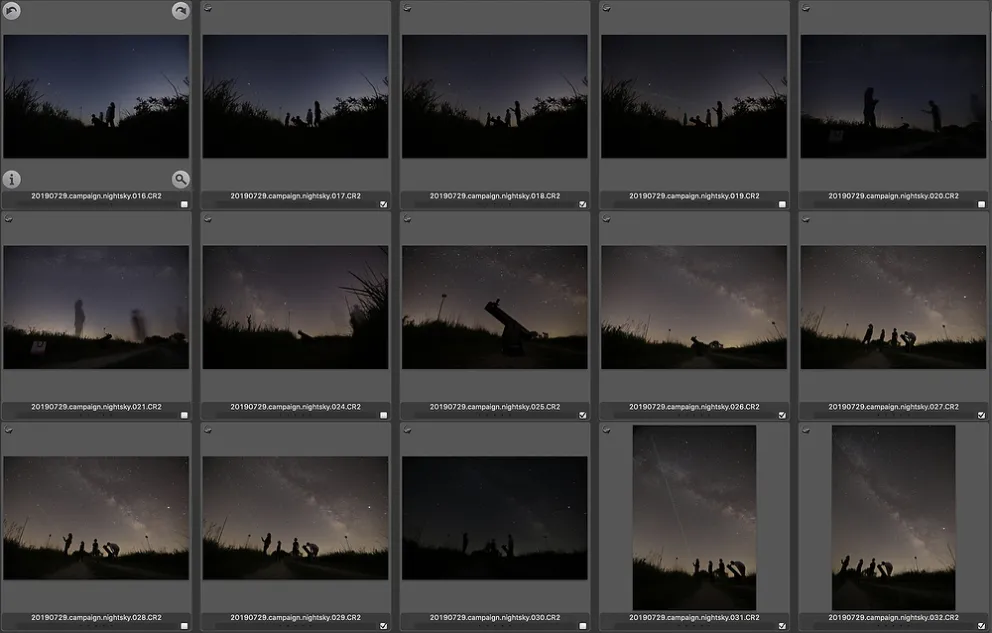
Where do you look for inspiration, feedback and motivation?
I really draw a lot of inspiration from the UPAA Facebook page and the MIC. We have so many phenomenally talented photographers in our organization it’s not hard to find work that inspires me. As the sole photographer on campus it can be really hard to find meaningful feedback on photos. That’s one of the things I miss from my newspaper days. Being part of a staff of talented photojournalists really made me push to get better. There was a lot of healthy competition and mentorship in my newspaper days that I now try to find through the MIC and my relationship with other photographers in the UPAA.
What would your dream assignment be?
During my childhood I wanted to be the photographer for Vine Line and document the Cubs. (Who am I kidding? I would still love that job.) In my newspaper days the answer was always the Olympics. Now I’m not really sure. Currently I get an awful lot of enjoyment out of trying to document the fleeting days of childhood of my kids that are now a junior and sophomore in high school and a sixth grader.
___________________________________________________
"What's the difference between a hippo and a Zippo? One's heavy and the other's a little lighter." Thanks for reading the UPAA blog. Feedback/suggestions/submissions welcome any time. Email editor Matt Cashore, mcashore@nd.edu